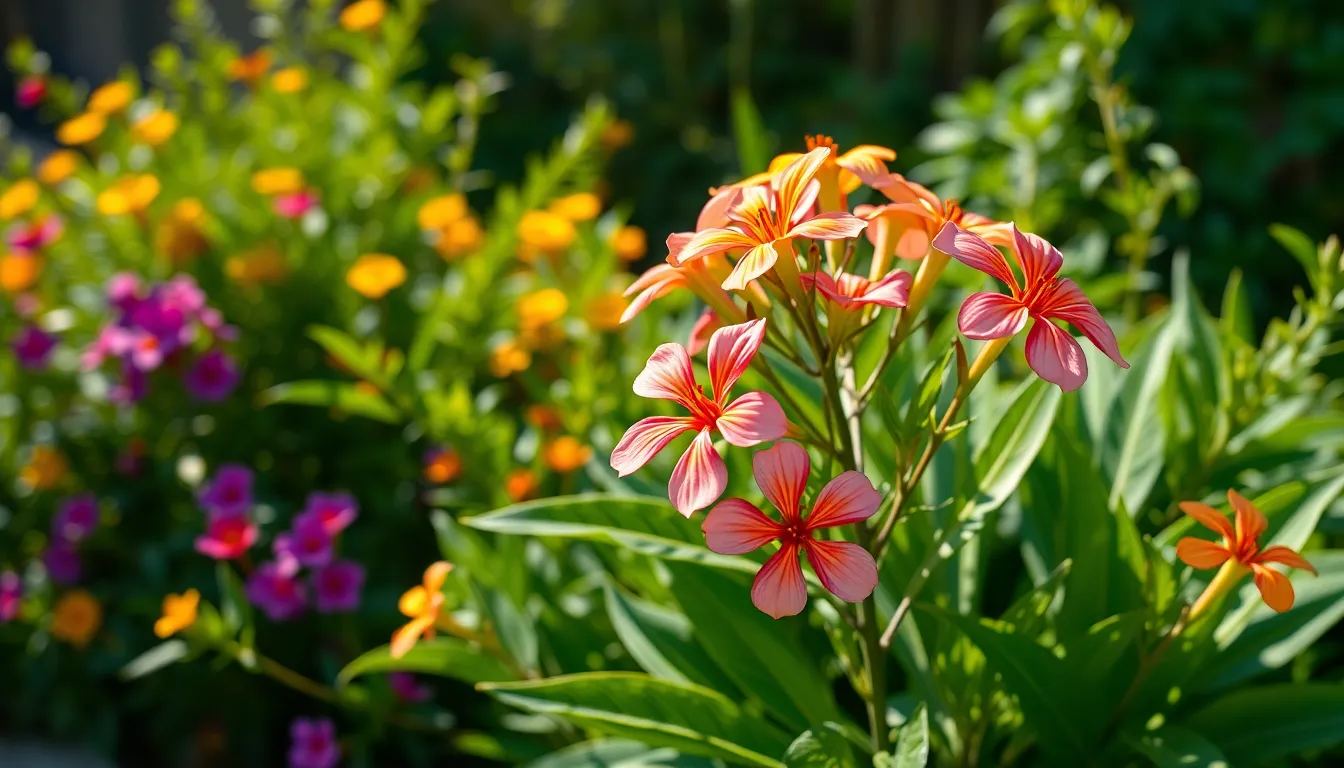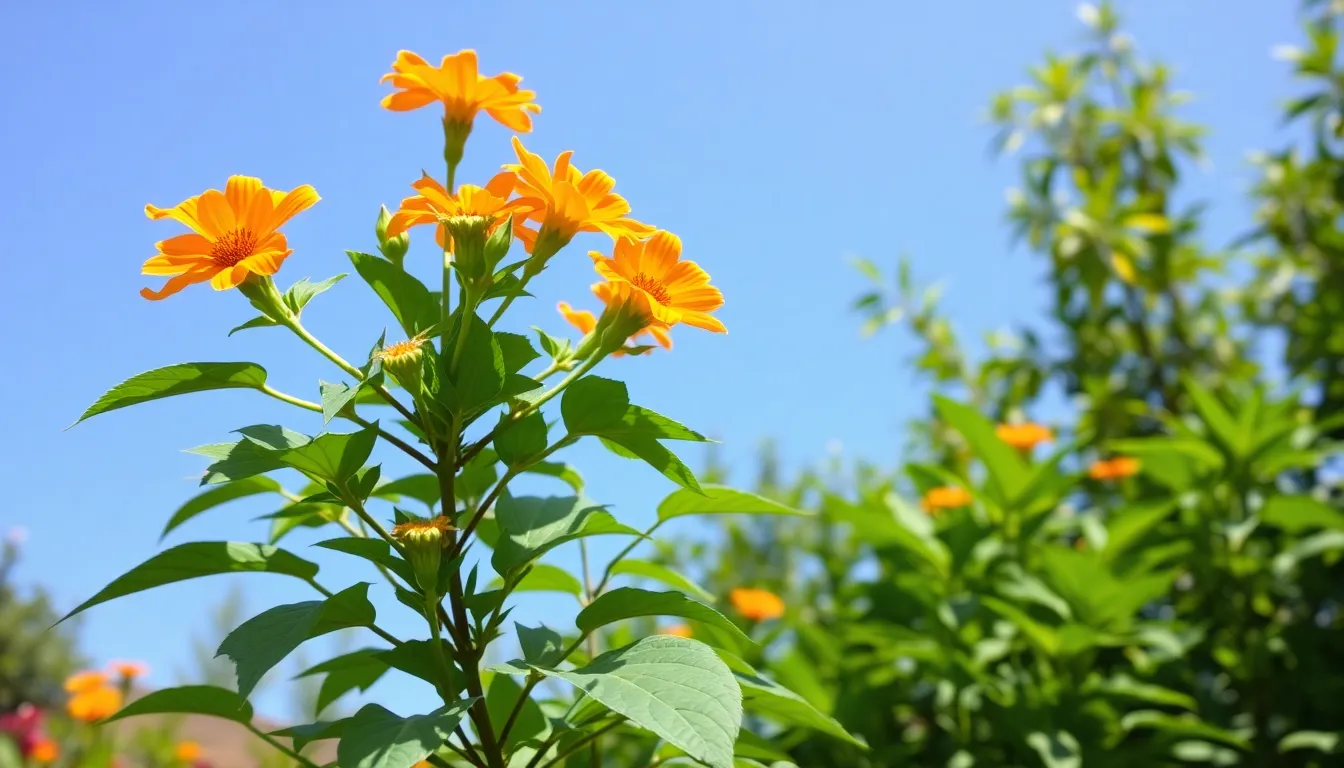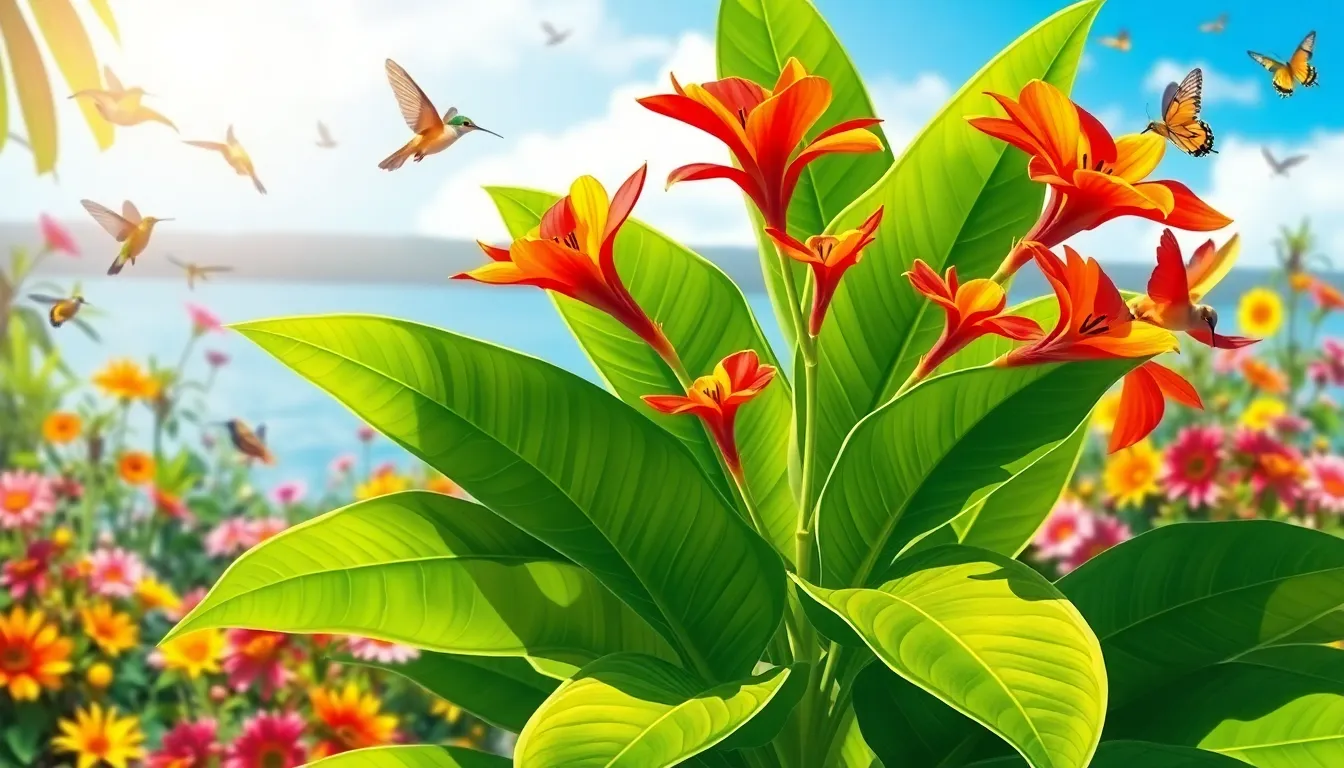If you’re looking to add a splash of drama to your garden, the Indian shot plant is your go-to green companion. With its striking foliage and vibrant flowers, it’s like the diva of the plant world—bold, beautiful, and just a bit high-maintenance. But don’t worry, caring for this tropical superstar isn’t rocket science. With the right tips and tricks, you’ll have it thriving like a pro.
indian shot plant care
Indian shot plant, scientifically known as Canna indica, thrives in warm climates and adds a tropical flair to gardens. This perennial plant features bold, large leaves that can reach lengths of up to 3 feet, creating a striking visual effect. Its vibrant flowers bloom in various hues, including red, orange, and yellow, attracting pollinators such as hummingbirds and butterflies.
Growth conditions for the Indian shot plant prefer full sun to partial shade. Well-draining, fertile soil significantly enhances its growth potential. Watering requirements include keeping the soil consistently moist, especially during the growing season. Excessive drought may lead to wilting, impacting overall appearance.
Fertilization plays a crucial role in maintaining optimal health. Applying a balanced fertilizer every four to six weeks encourages vigorous growth and flowering. Pests and diseases pose potential threats, with aphids and spider mites being the most common. Regular inspections help catch infestations early, allowing for timely interventions.
For propagation, the Indian shot plant is commonly grown from rhizomes or divisions. Splitting the rhizomes in early spring allows for the establishment of new plants. Seasonal maintenance involves cutting back foliage after frost and promoting healthy regrowth for the next season. This plant adapts well to container gardening, providing versatility in design and arrangement.
Using these care tips ensures that the Indian shot plant flourishes, showcasing its unique beauty in any garden setting.
Ideal Growing Conditions


The Indian shot plant thrives under specific conditions that enhance its growth and beauty. Understanding these requirements leads to a vibrant display in any garden.
Light Requirements
Full sun exposure provides optimal growth for the Indian shot plant. Eight hours of direct sunlight daily promotes vigorous blooming and foliage development. While it can tolerate partial shade, reduced light conditions often result in fewer flowers. Positioning the plant in a sunny spot maximizes its potential, ensuring it remains a focal point in the landscape. It’s essential to monitor shadows from nearby structures or plants, as shade can hinder its performance.
Temperature Range
The Indian shot plant flourishes in warm conditions. Ideal temperatures range from 65°F to 95°F, supporting active growth. Cold temperatures below 32°F can cause damage, leading to diminished vitality. In regions with harsh winters, protective measures become crucial, like mulching or bringing the plant indoors. Consistent warmth not only sustains its health but also encourages a longer blooming period throughout the growing season.
Soil Preferences
Well-draining, fertile soil is essential for the Indian shot plant. A mixture rich in organic matter supports root development and nutrient uptake. Soil pH levels of 6 to 7.5 are ideal, allowing for nutrient accessibility. Sandy loam or clay loam works well, ensuring adequate drainage while retaining moisture. Regular amendments with compost can improve soil quality, nourishing the plant and enhancing growth.
Watering and Fertilization
Proper care of the Indian shot plant includes a well-defined watering and fertilization routine. These two elements play critical roles in maintaining the plant’s vibrant growth and overall health.
Watering Schedule
Maintain consistent moisture in the soil for optimal growth. Watering should occur when the top inch of soil feels dry to the touch, especially during the active growing season. Ensure plants receive at least one inch of water weekly, either from rainfall or additional watering. During hot, dry spells, consider increasing the frequency of watering, as this plant thrives in humid conditions. Monitor for signs of wilting or yellowing leaves, as they indicate insufficient water.
Fertilization Tips
Use a balanced fertilizer to promote vigorous growth and flowering. Applying fertilizer every four to six weeks during the growing season ensures nutrients remain accessible. Consider using a water-soluble fertilizer with a ratio of 10-10-10 or similar to support full bloom development. It’s advisable to reduce fertilization in late fall to prepare for dormancy. Enriching the soil with organic compost can also improve overall soil quality and enhance nutrient availability.
Pruning and Maintenance
Maintaining the Indian shot plant involves strategic pruning and consistent upkeep to promote healthy growth and vibrant blooms.
When to Prune
Pruning occurs at specific times to enhance the plant’s appearance and health. Cutting back foliage after the first frost stimulates new growth in spring. Regular maintenance throughout the growing season encourages more vigorous blooming. Removing spent flowers also aids in directing energy towards producing new blooms. An annual inspection in early spring allows for any trimming needed to shape the plant, ensuring it remains lush and visually appealing.
Tools Needed for Pruning
Essential tools make pruning efficient and effective. Sharp pruning shears provide clean cuts, minimizing stress on the plant. Gloves protect hands while handling foliage or encountering pests. A hand trowel assists in digging out any unwanted or crowded growth. Carrying a bucket can help collect debris, keeping the gardening area neat. Using these tools ensures a smooth pruning process, leading to a thriving Indian shot plant.
Common Pests and Diseases
Indian shot plants face challenges from various pests and diseases. Aphids often invade these plants, sucking sap from leaves, which weakens them. Spider mites also appear, leaving webbing and causing leaf discoloration. Inspecting foliage regularly helps in early detection.
Fungal infections can struggle against healthy plants. Leaf blight, characterized by dark spots and wilting leaves, requires immediate attention. To combat this, maintaining proper air circulation and avoiding overhead watering proves effective.
Bacterial diseases can impact plant vigor. Bacterial wilt causes rapid wilting and often results from stressed plants. Eliminating infected specimens prevents the spread of disease.
Surrounding environment influences pest activity. High humidity encourages fungal growth, while dry conditions attract spider mites. Adjusting care routines based on climate can deter infestations.
Implementing Integrated Pest Management (IPM) strategies aids in controlling pests. Utilizing insecticidal soaps or neem oil provides natural alternatives to chemical treatments. Regularly monitoring for pests ensures timely interventions.
Maintaining plant health strengthens resilience to pests and diseases. Healthy Indian shot plants exhibit robust growth and vibrant flowers, reducing susceptibility. Fertilizing appropriately and providing consistent moisture play vital roles in promoting strong plants.
Taking these proactive measures ensures the Indian shot plant thrives despite potential threats.
Conclusion
Caring for the Indian shot plant can be a rewarding experience for any gardener. With its stunning foliage and vibrant blooms it adds a unique touch to any garden. By providing the right conditions such as ample sunlight consistent moisture and proper fertilization gardeners can enjoy a flourishing plant that attracts pollinators. Regular maintenance including pruning and pest management further ensures the plant’s health and longevity. Embracing these care tips will not only enhance the beauty of the Indian shot plant but also contribute to a thriving garden environment.

